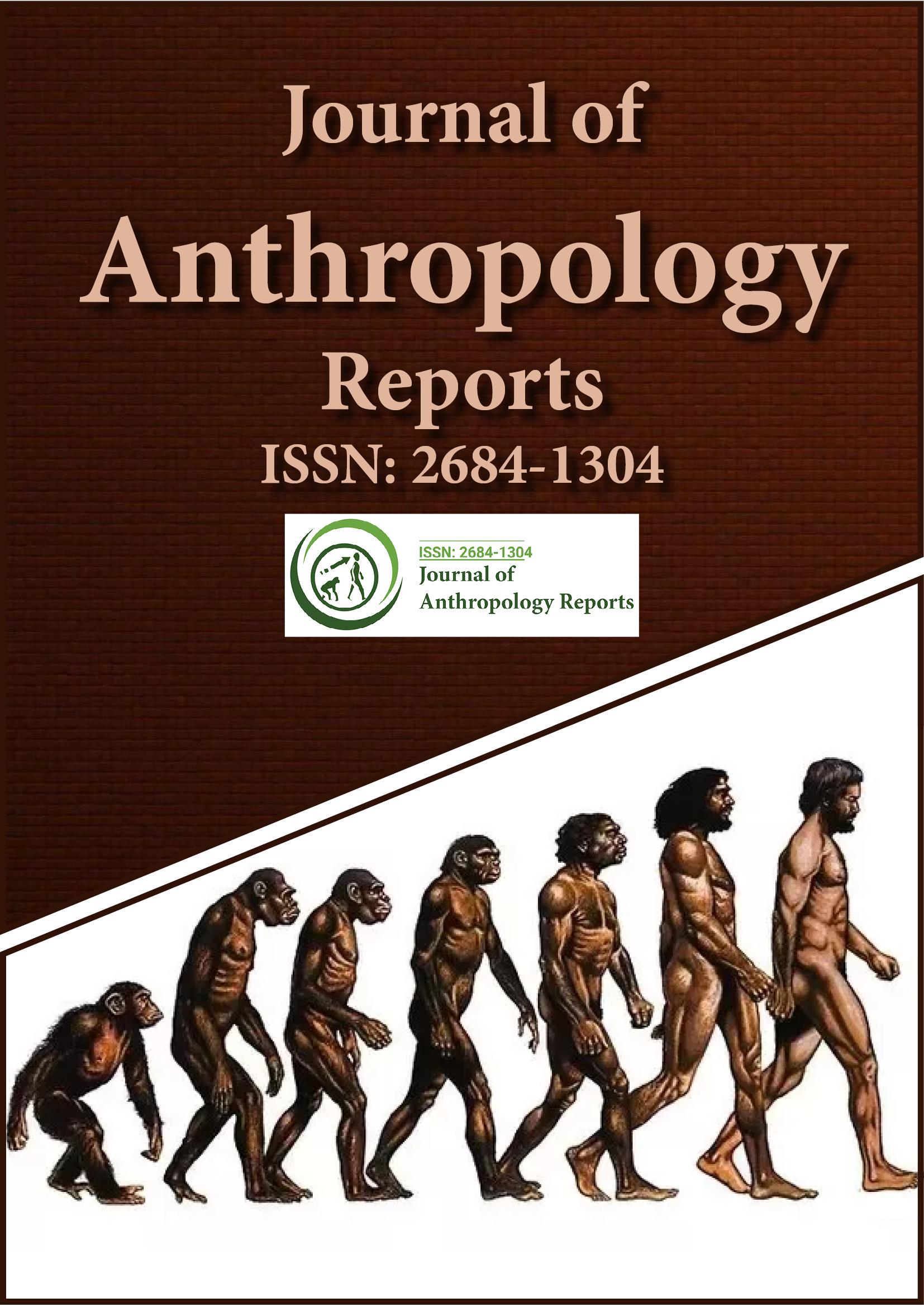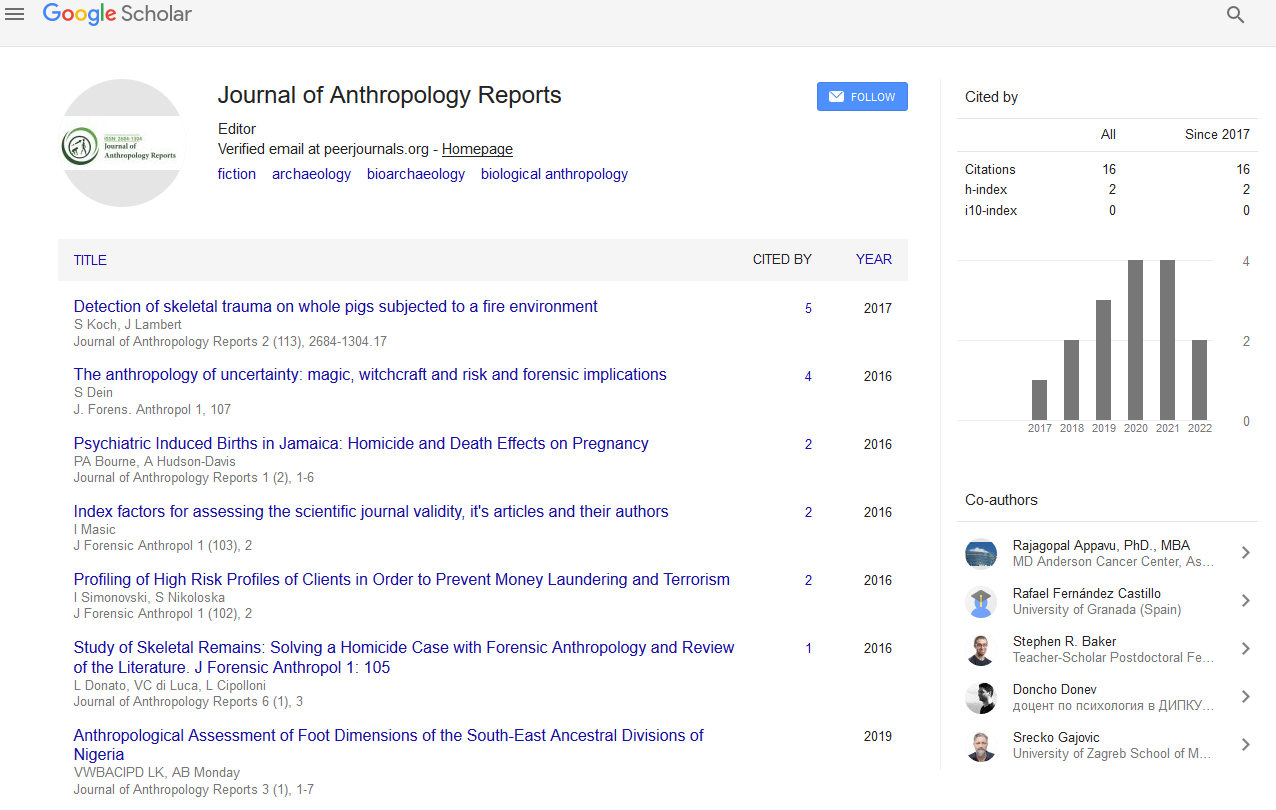Indexed In
- RefSeek
- Hamdard University
- EBSCO A-Z
Useful Links
Share This Page
Journal Flyer

Open Access Journals
- Agri and Aquaculture
- Biochemistry
- Bioinformatics & Systems Biology
- Business & Management
- Chemistry
- Clinical Sciences
- Engineering
- Food & Nutrition
- General Science
- Genetics & Molecular Biology
- Immunology & Microbiology
- Medical Sciences
- Neuroscience & Psychology
- Nursing & Health Care
- Pharmaceutical Sciences
Perspective Article - (2024) Volume 7, Issue 2
Role of Ethnicity in Identifying Missing Persons
Emily K. Johnson*Received: 13-May-2024, Manuscript No. JFA-24-26535; Editor assigned: 16-May-2024, Pre QC No. JFA-24-26535 (PQ); Reviewed: 30-May-2024, QC No. JFA-24-26535 (QC); Revised: 06-Jun-2024, Manuscript No. JFA-24-26535 (R); Published: 13-Jun-2024, DOI: 10.35248/2684-1304.24.7.200
Description
Criminological human studies are the utilization of natural human studies and its strategies to distinguish the living and the dead, particularly in the structure of a lawful examination of human remaining parts. Remaking the natural profile might help policing, inspectors, and medico legal demise specialists thin down the rundown of possibly unidentified people via consequently barring an enormous level of the populace. Assessing the natural profile is an endeavor to recreate a singular's life and passing, including organic sex and age, identity, height, and any individualizing skeletal or dental characteristics. On account of sub-adult skeletal remaining parts (fetal, baby, youngster, and other juvenile people younger than 18), it is vital that the main boundary of the natural profile that is regularly assessed is age.
An identity or ethnic gathering is a gathering who share particular social credits like culture, legacy, language, history, religion, and different qualities. Identities are normally related to a particular geographic district where their gathering began. Individuals share around 99.9% of our hereditary code: the pieces of our DNA that program us to have similar organs, a similar kind of digestion, and other essential capabilities. The excess 0.1% of our DNA represents the immense characteristic contrasts between people: appearance, character, etc.
Ethnicity, similar to different boundaries of the organic profile, is assessed to work with the ID of an obscure person by assisting with restricting the pool of conceivable coordinates with missing people. These days, nationality is frequently improperly marked as race. In any case, this idea isn't legitimate on an organic level, and criminological anthropologists have attempted to reexamine this boundary of the natural profile. Rather than utilizing race, the words heritage or nationality, as a statement of our aggregate (presentation), are utilized in casework. Since our aggregate might differ as per natural activity, it tends to be assessed by breaking down the morphological characteristics of the skeletal remaining parts. As currently expressed, when an individual is accounted for as missing, the data accumulated by policing age, natural sex, height, and ethnic beginning. In this way, since human distinguishing proof is a similar cycle, this large number of boundaries ought to be utilized in scientific case examination to get basically a prohibition.
Moreover, a few creators recommend that nationality ought to be the principal boundary to be assessed on the grounds that the outcomes will figure out which strategy ought to be utilized when the other three ID boundaries are assessed. By and large, anthropologists can partition people into wide geologically discrete gatherings, including (yet not restricted to) the accompanying: European, African, Asian, Local American, and Hispanic. Customarily, ethnic beginning assessment was accomplished by a visual assessment (macromorphoscopic or MMS investigation) of certain components of the human skull (e.g., interorbital broadness, nasal gap width, or the morphology of the nasal spine, palatine stitches). Be that as it may, to lessen subjectivity, most of the strategies center now around a rundown of nonmetric cranial MMS not entirely settled inside a measurable system to permit the professionals to create a genuinely approved forecast of geographic beginning. The underlying confinement and normalization of cranial MMS characteristics are given by Hefner, and Hefner and Linde. Detailed paces of between and intra-spectator arrangements are accessible.
Citation: Johnson EK (2024) Role of Ethnicity in Identifying Missing Persons. J Anthropol Rep. 7:200.
Copyright: © 2024 Johnson EK. This is an open-access article distributed under the terms of the Creative Commons Attribution License, which permits unrestricted use, distribution, and reproduction in any medium, provided the original author and source are credited.

